One of the more useful traits to examine when trying to identify mushrooms is their method of spore dispersal. This is simply the means by which the mushroom produces and distributes its spores.
You can think of spores as fungi seeds. Mushrooms produce and drop millions of spores with the intention that some of them will germinate, fuse together, and grow into new mycelium. Mycelium is the actual organism from which mushrooms are created. To make a comparison: the mycelium is the tree, the mushrooms it produces are the apples, and the spores created by the mushrooms are the apple seeds.
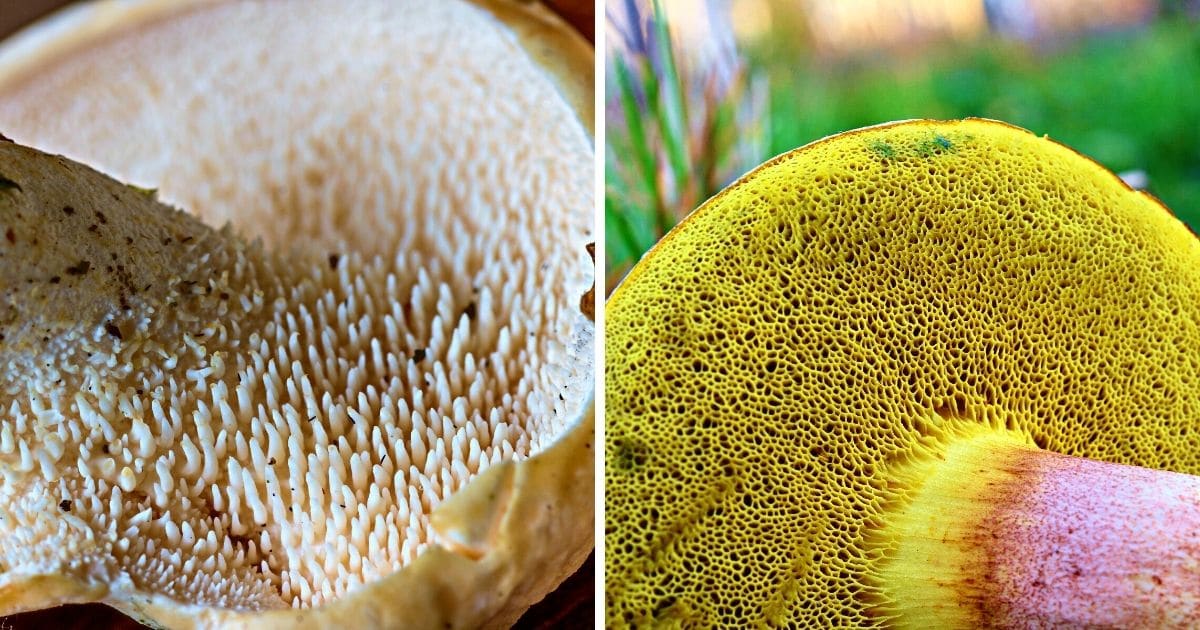
The tissue that creates these spores (called the hymenium) is found on a few different types of structures. We’ll examine these structures individually starting with gills, moving on to pores, and ending with teeth (my favorite!). Finally, we’ll identify mushrooms that disperse spores without using gills, pores, or teeth.
Mushrooms With Gills
Mushroom gills are the thin, papery structures that hang vertically under the cap. The sole purpose of these gills, called lamellae, is to produce spores. The spores are then dropped from the gills by the millions where they are scattered by wind currents.
Examining the gills is important when identifying mushrooms. Mycologists have many terms to describe gill structure, some very precise and complicated. Here are some of the more common features of mushroom gills:
Stem attachment: Observe how the gills attach to the stem. They may be “decurrent”, meaning they run down the stem as with oyster mushrooms. They may be “free”, meaning they don’t attach to the stem at all as with portobellos or amanitas. Or they may be attached directly or by a notch. Your guidebook will tell you more.
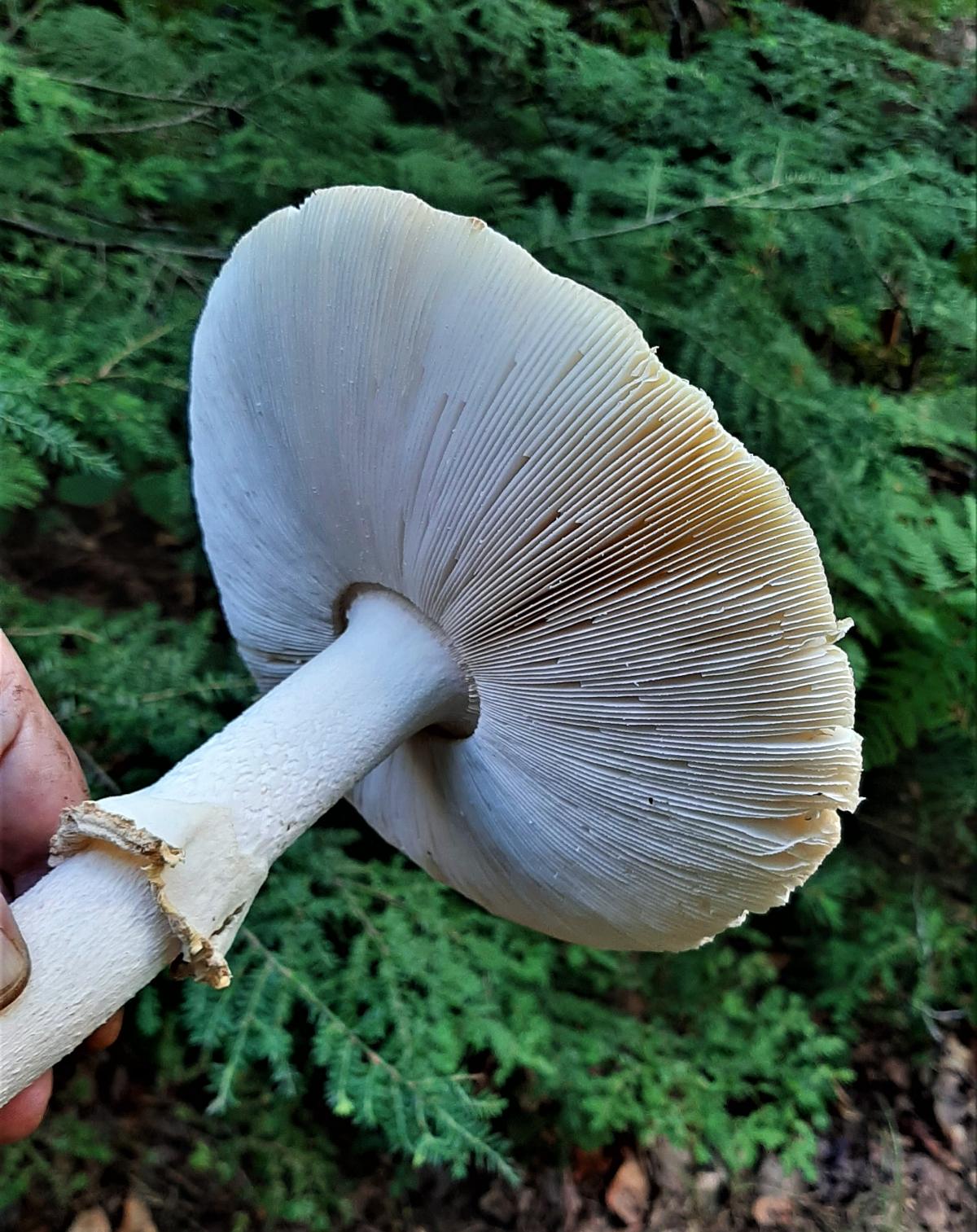
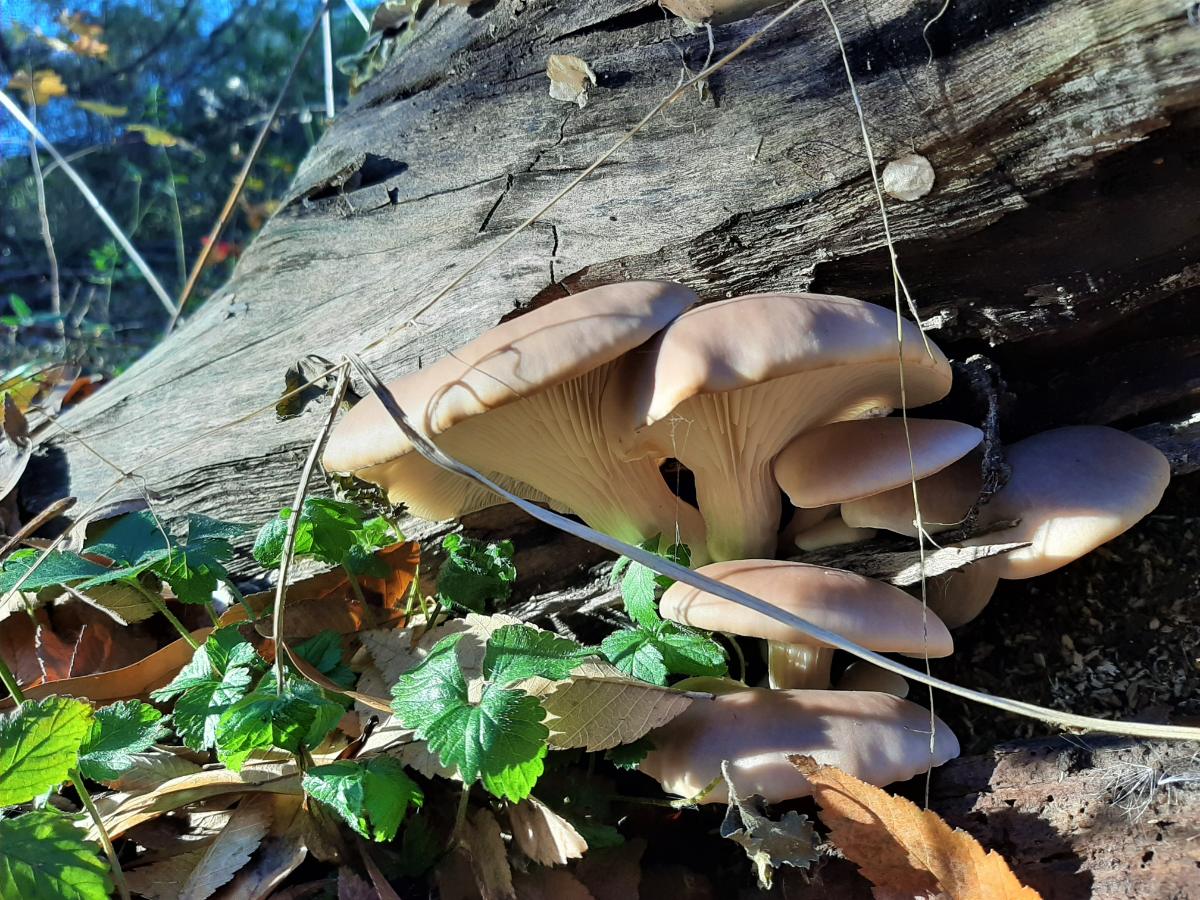
Color and bruising: Note the color of your mushroom’s gills. Sometimes they will be very different from the cap color. If you apply pressure to them with your fingernail or a knife they may bruise a different color. These features can help you identify mushrooms with gills.
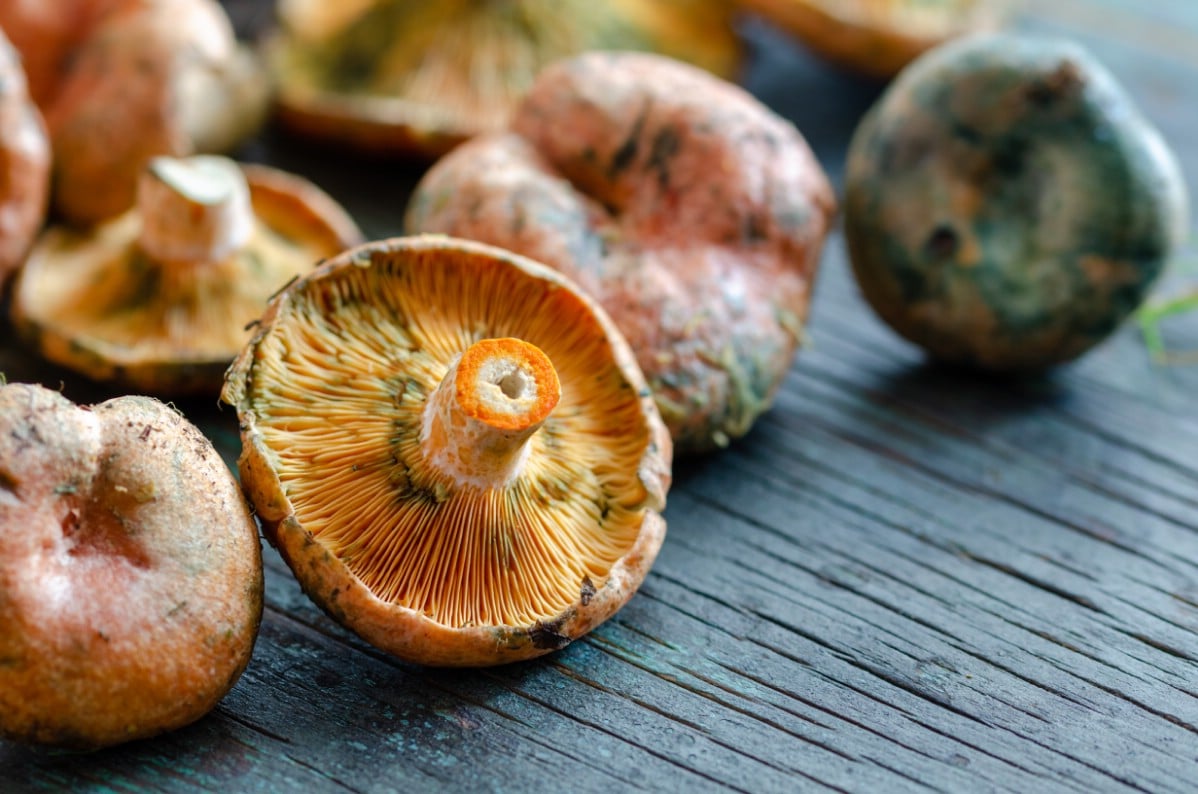
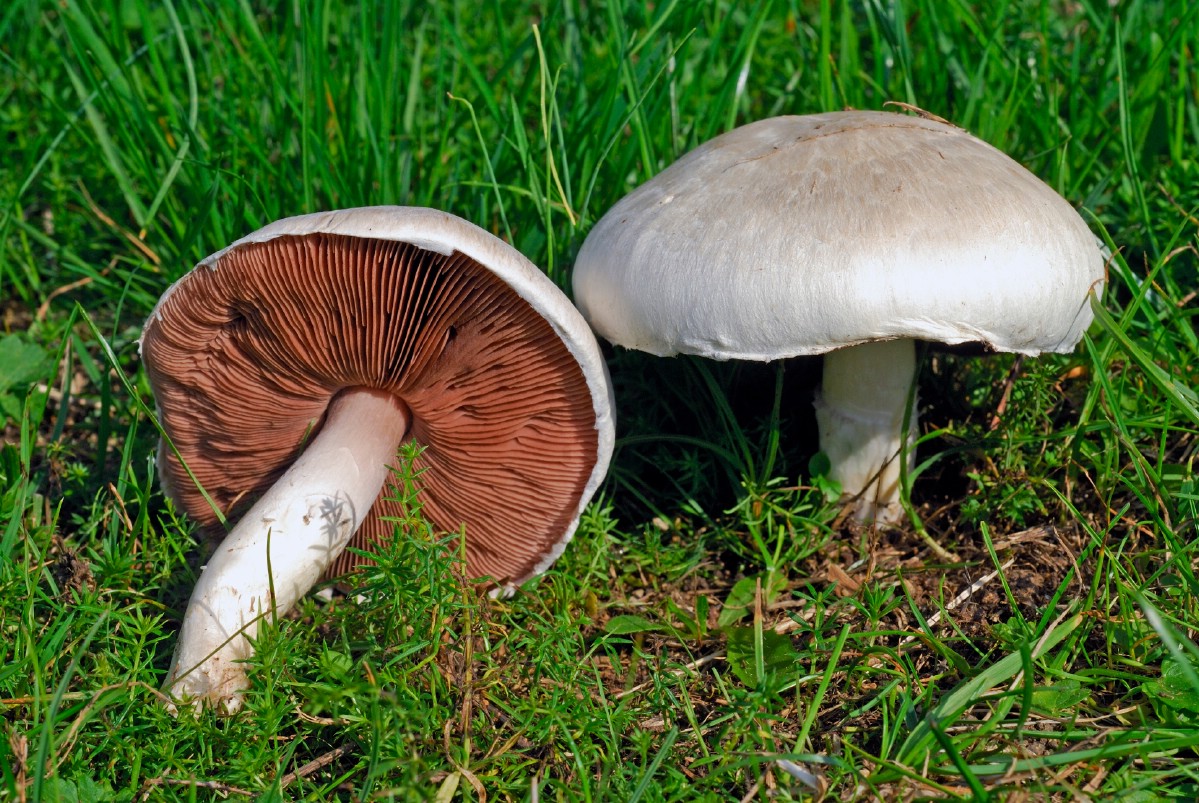
Gill spacing: Notice how many gills are packed into the underside of the cap. Is it crowded with many gills in one place or is there space between them? This can admittedly be hard to judge!
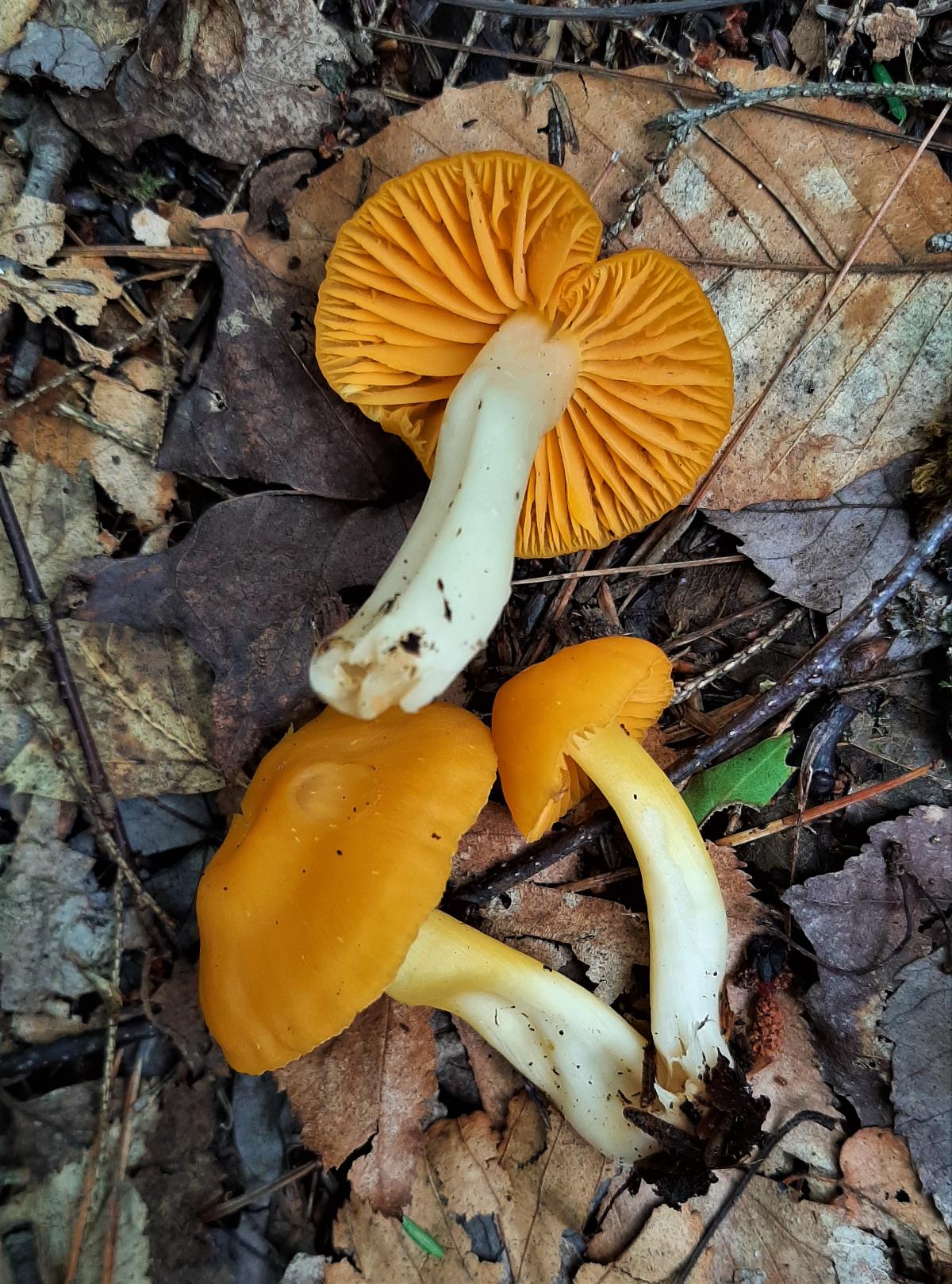
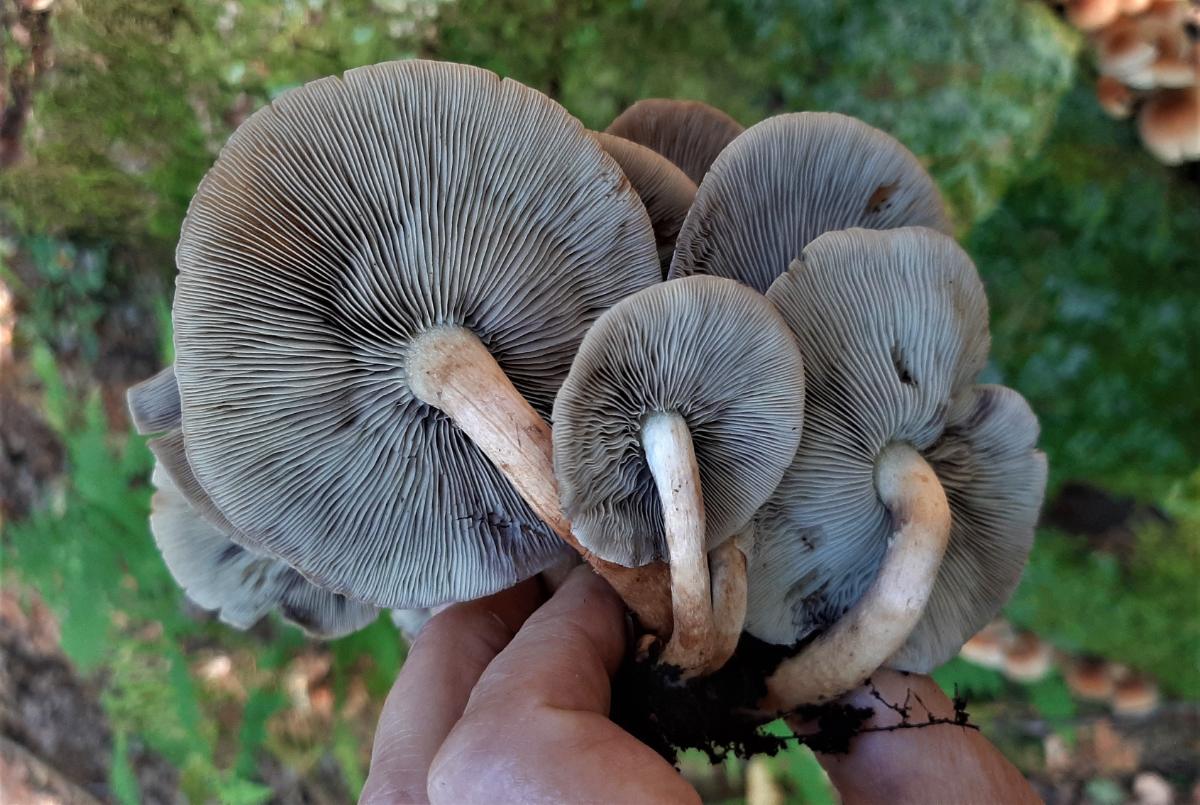
Length: Sometimes the gills may not run all the way from the stem to the cap. These are called “short gills” and may be helpful in making a proper identification.
Forking: Whether or not the gills fork (branch off from one another) can be another important factor when trying to identify mushrooms.
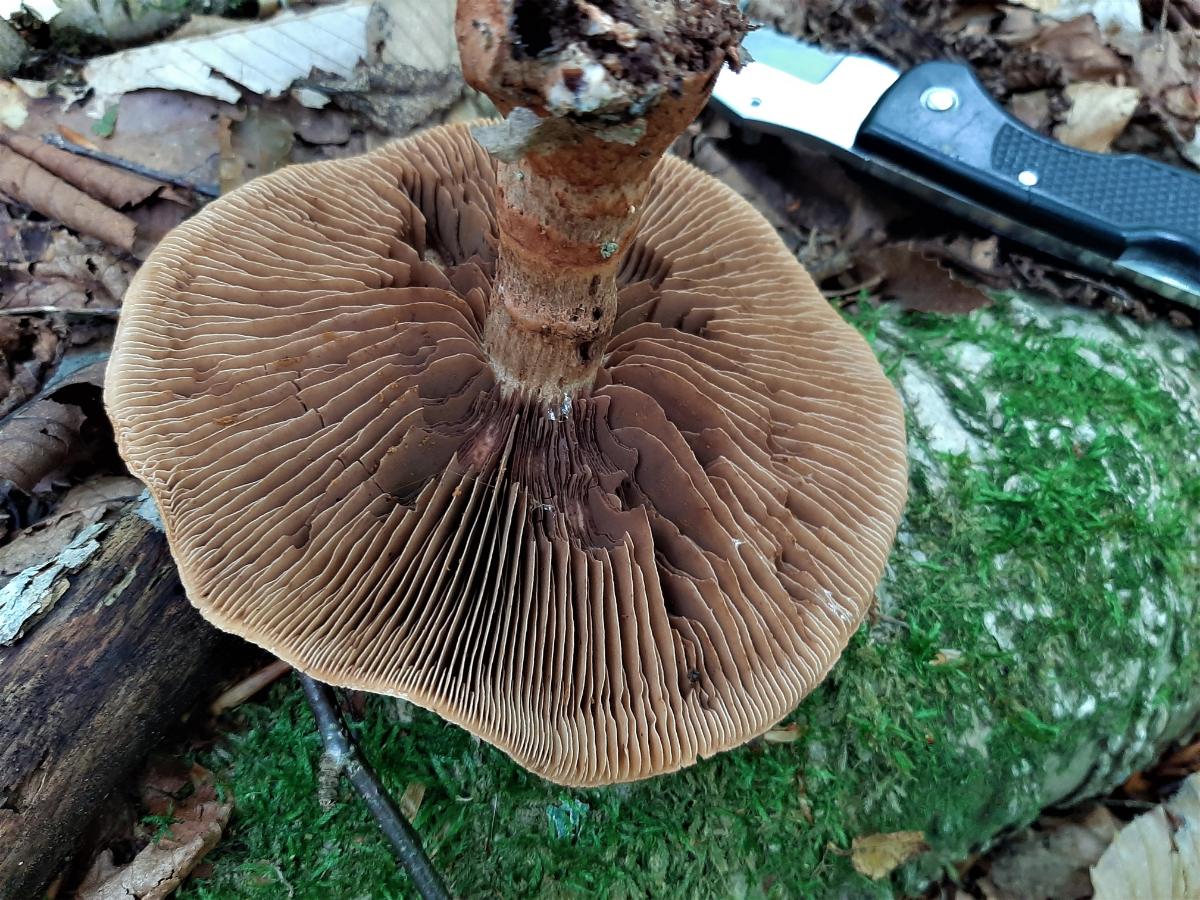
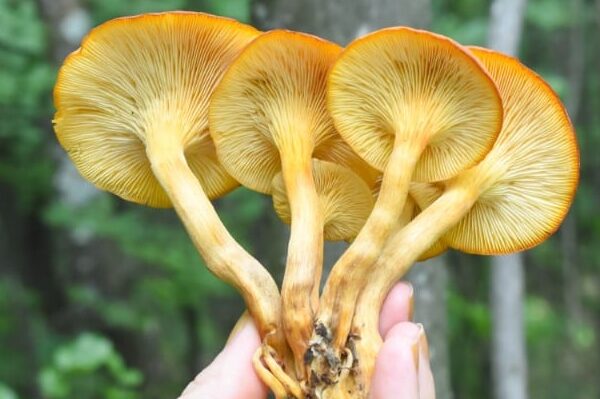
False Gills: Occasionally forking gills may fool you! The edible chanterelle has structures that appear forked but these are actually “false gills”. Unlike true gills, they are not separate features that can be individually picked off. Instead, they appear as melted folds on the underside of a mushroom. Learn to distinguish true from false gills if attempting to pick chanterelles.
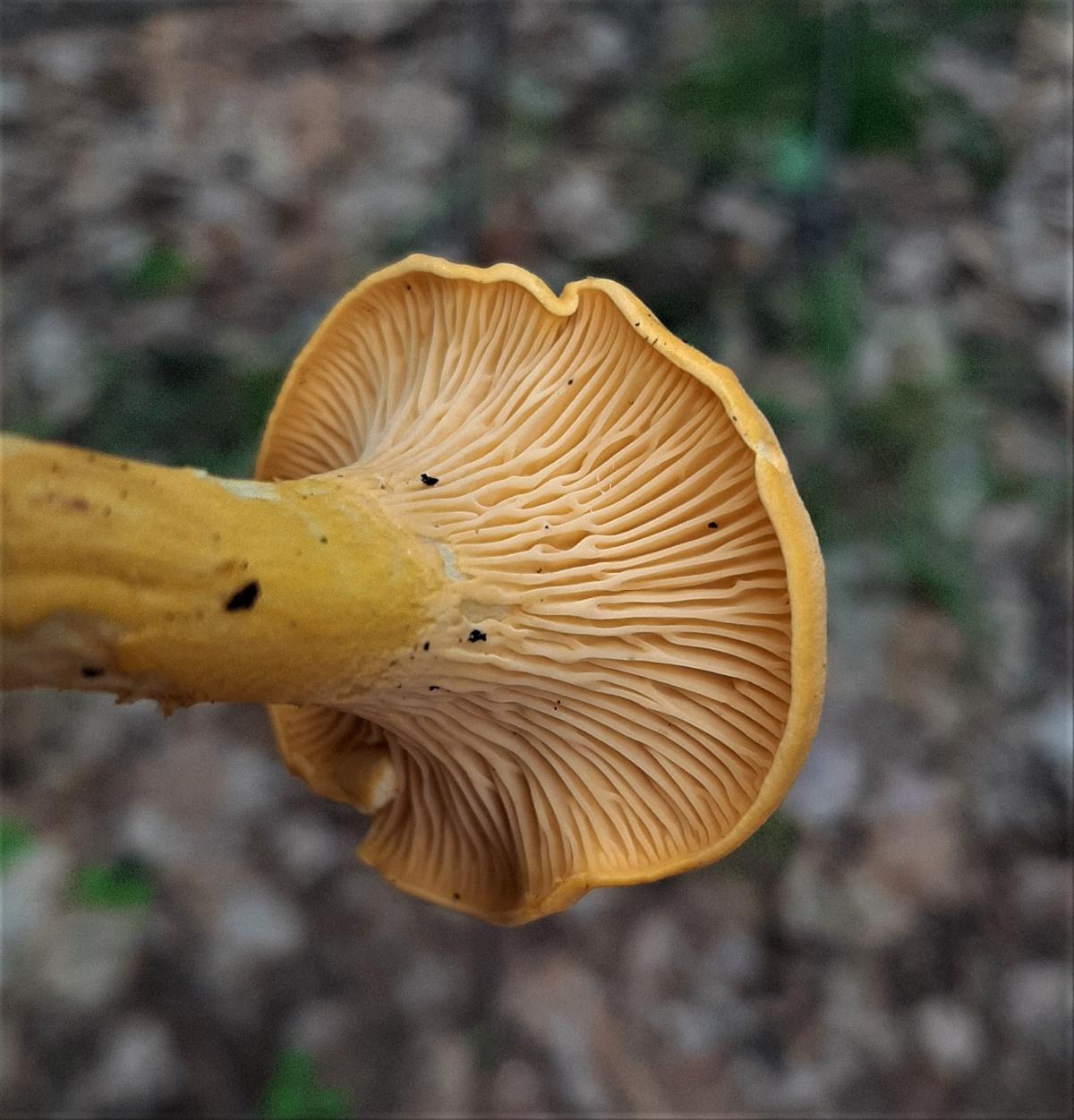
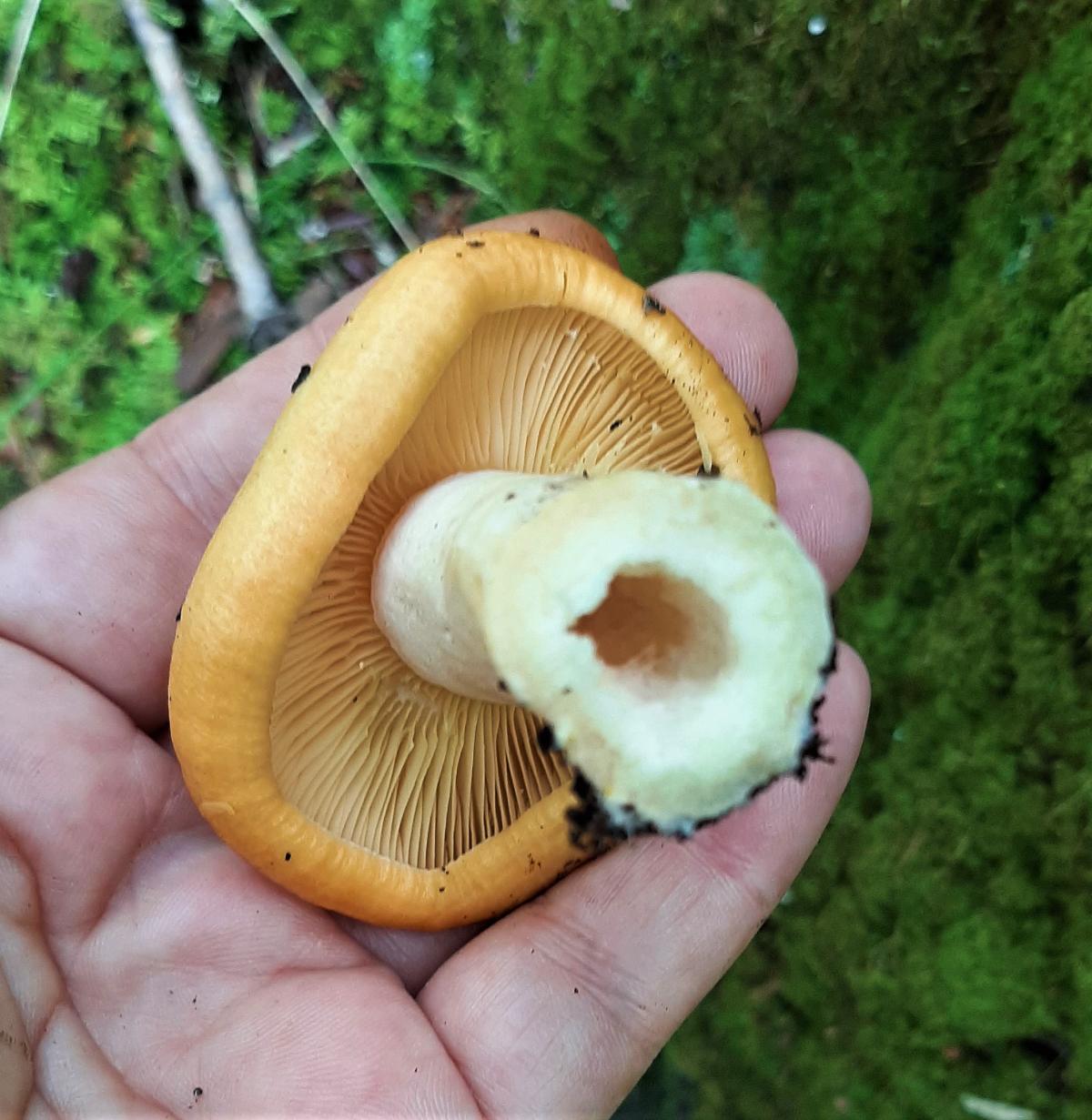
A great way to safely examine mushroom gills is to buy some portobello mushrooms from your grocery store. This allows you to pick and prod at them to your heart’s content. You may see some recipes asking to remove the gills before cooking. This is not due to any danger but for aesthetic reasons. The gills tend to give a darker, grayish color to the rest of the meal, which may not look very appetizing!
Species With Pores
Another structure used for spore dispersal instead of a gill is known as a pore. Mushroom pores appear as small holes on the underside of the cap.
These holes are actually the ends of a series of tubes within the mushroom cap. Spores are produced on the sides of these tubes and eventually, they are released where they fall down the tube, out the pore, and into the air. Wind, animals, and insects will further carry them from there.
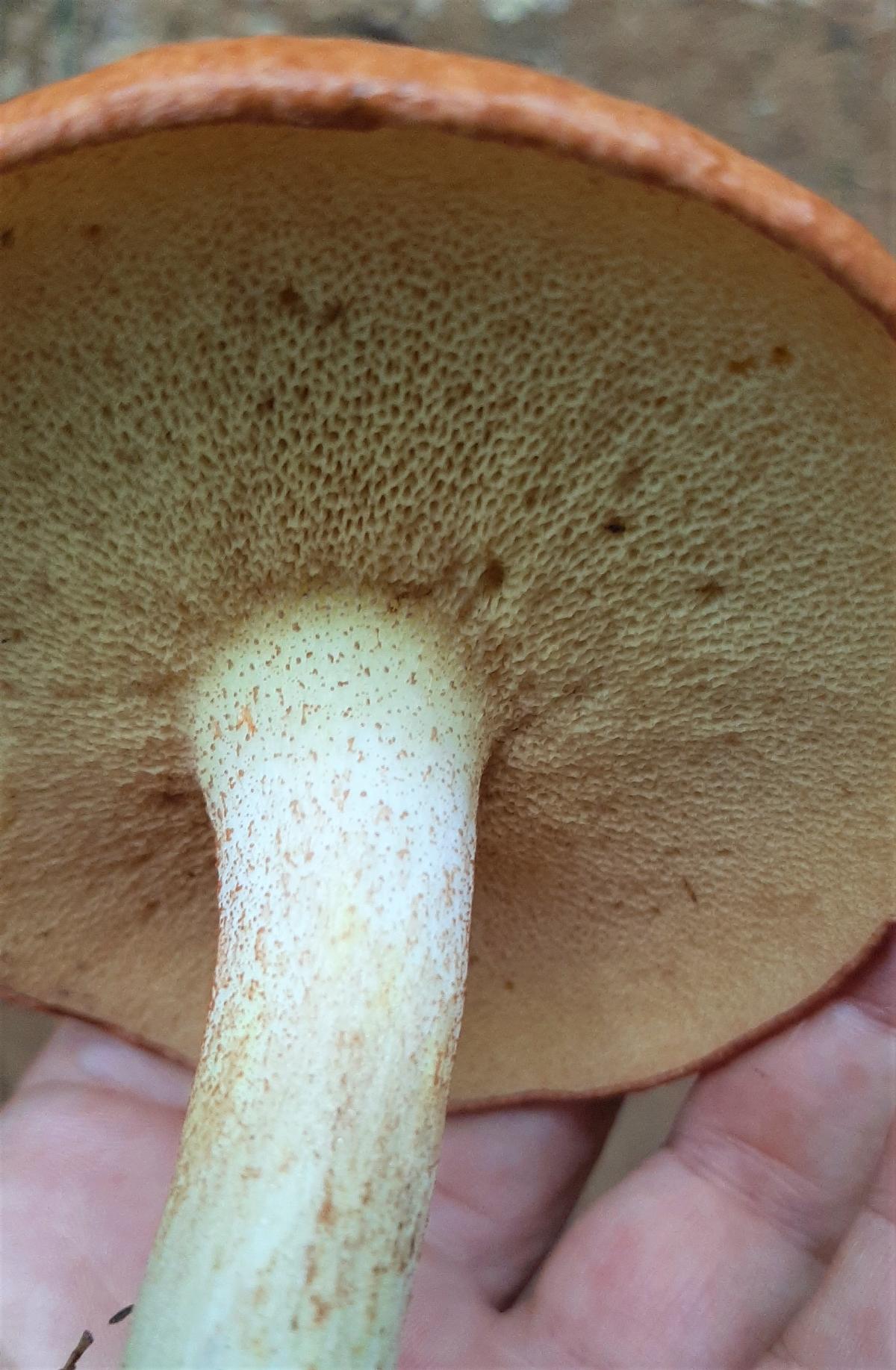
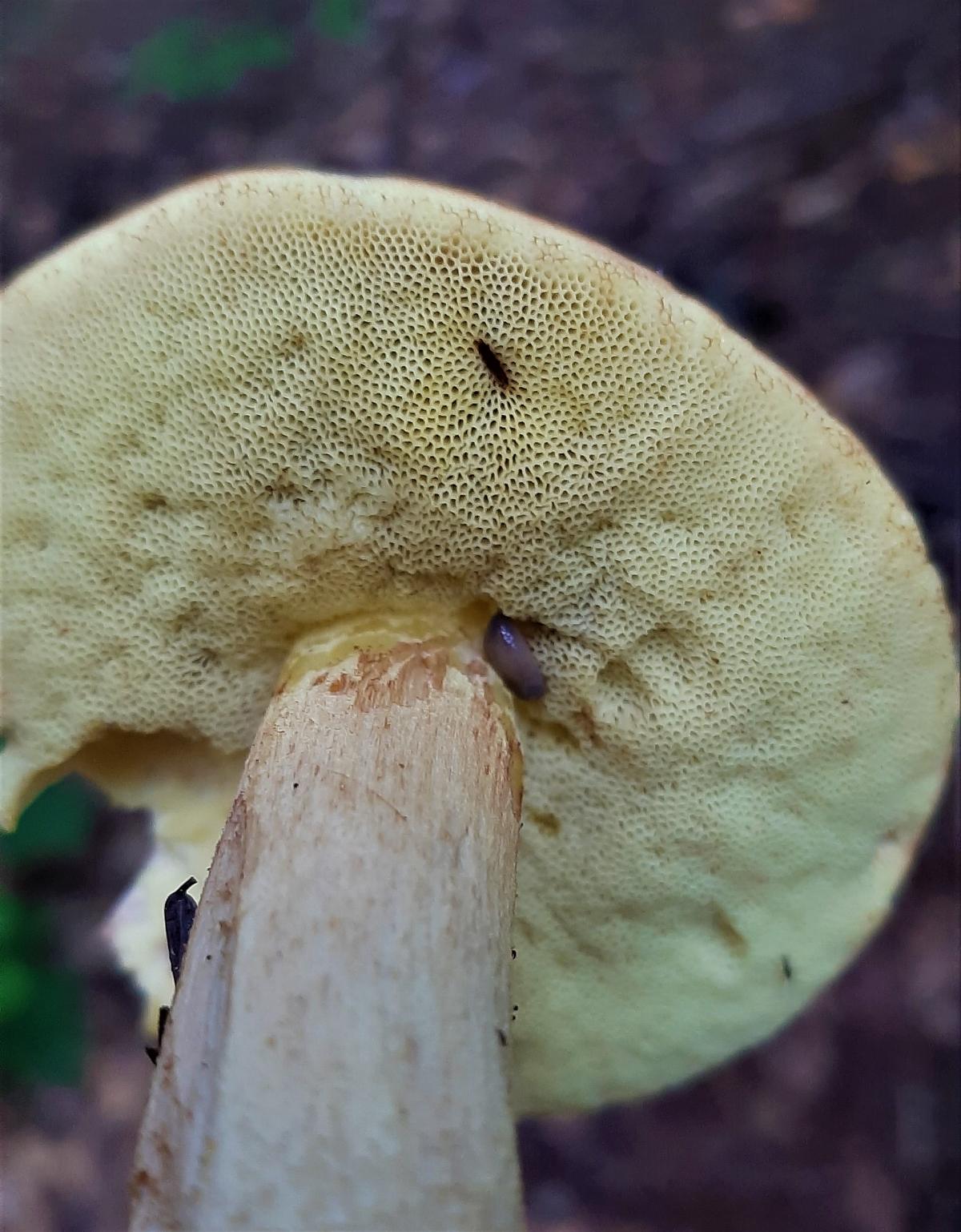
When trying to identify mushrooms, be sure to note the pore surface. Traits such as color, pore size, and pore pattern may help indicate the species. A key or guidebook will help you narrow it down, although remember that certain features may change as a mushroom ages. (Don’t worry though, gills will never change into pores!)
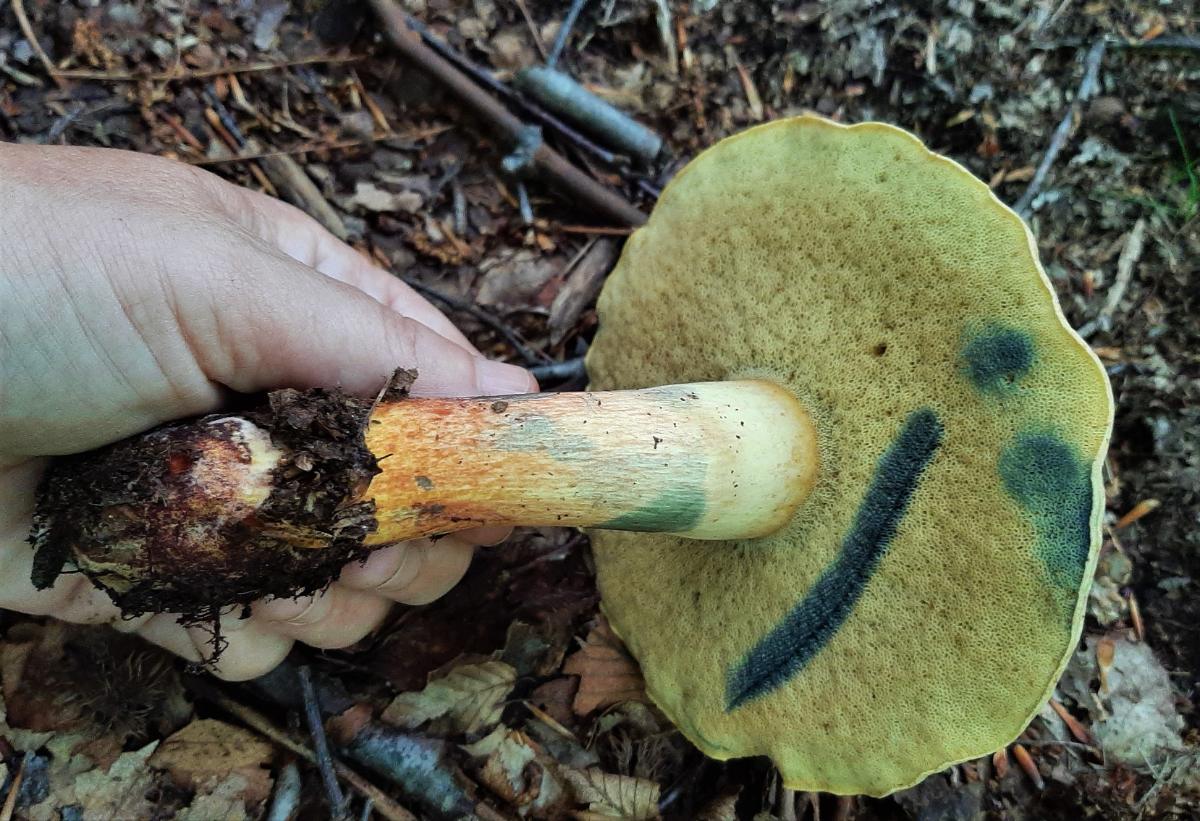
Two common groups of mushrooms with pores are boletes (the Boletus genus) and polypores. Some quick characteristics of each:
- Boletes are mycorrhizal, meaning they form symbiotic relationships with the roots of trees. Thus they are mainly found growing on the ground near trees, usually in the summer.
- Most boletes have a stalk, an umbrella-shaped top, and disperse spores through the small pores underneath the cap. This pore-laden area beneath the cap is often quite spongy.
- Some boletes, such as the porcini mushroom (Boletus edulis), are considered choice edibles. Others may produce gastric distress, particularly certain red-pored boletes. Don’t assume any bolete that you find is edible! Take the time to make a positive identification.
- Unlike boletes, polypores almost always grow on wood and never on the ground. They’re found on rotting trees, stumps, and logs.
- Polypores are normally shaped like shelves, hence the term “bracket fungi”. They don’t have caps or a distinct stem.
- Polypores contain no poisonous species, making them a good group to examine when learning to identify mushrooms. Some are also known to have medicinal value. Examples of these would be the reishi mushroom (Ganoderma lucidum) and the turkey tail (Trametes versicolor).
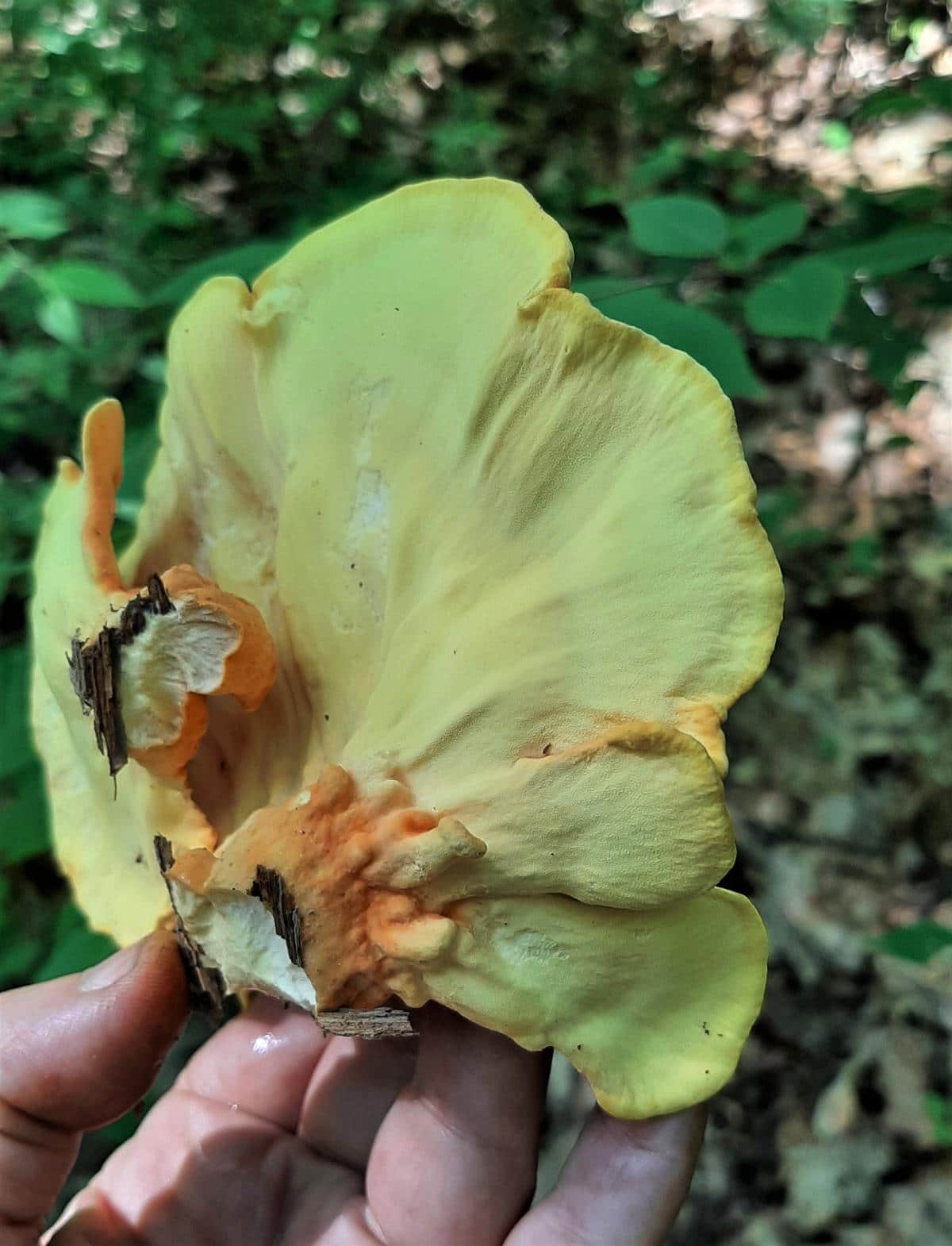
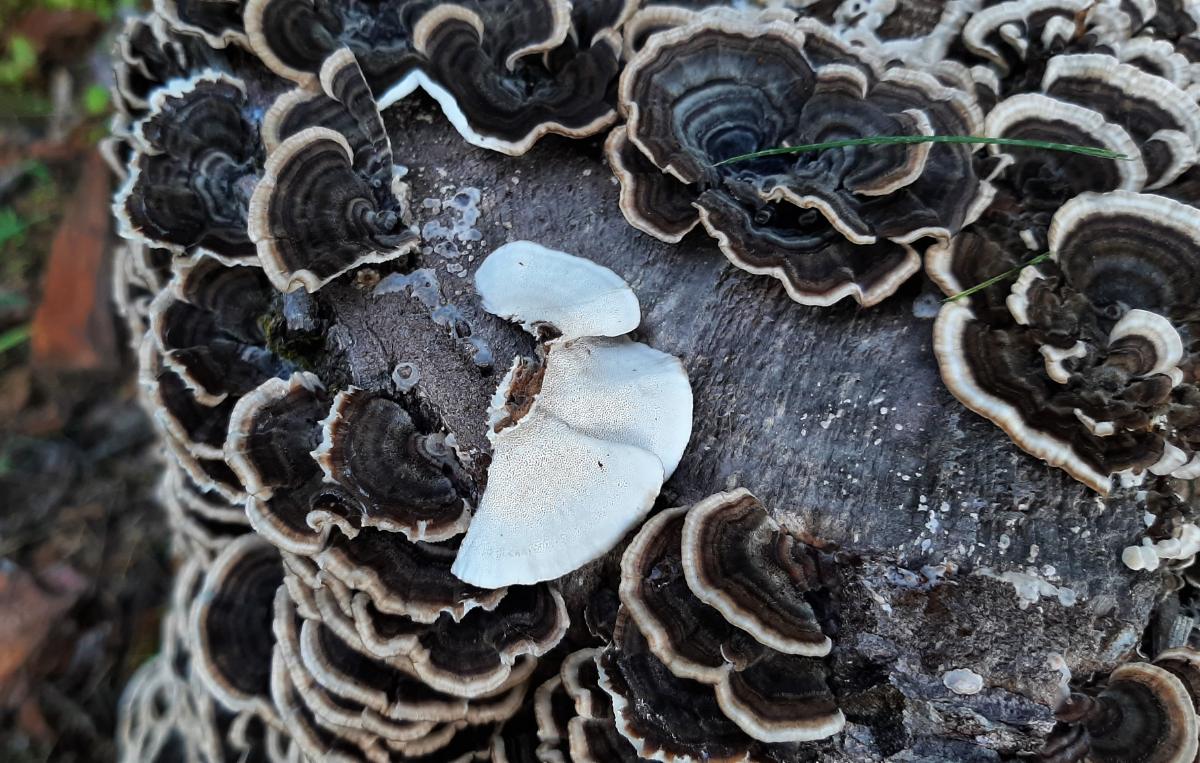
Tooth Fungi
Yet another method of spore dispersal is through teeth (also called spines). Tooth fungi have long, thin “teeth” that hang downward and produce spores. They have basically the same setup and function as gilled fungi; only the process is done through their spiny teeth.
Although there are fewer mushrooms with teeth than their gilled and pored counterparts, this group of fungi still contains some interesting species. The hedgehog mushroom (Hydnum repandum, photo to the right) is a popular edible closely related to the golden chanterelle. Another species are known as Hericium erinaceus (also called Lion’s Mane, Bearded Tooth, or Bearded Hedgehog) is a delicious edible with possible medicinal properties.
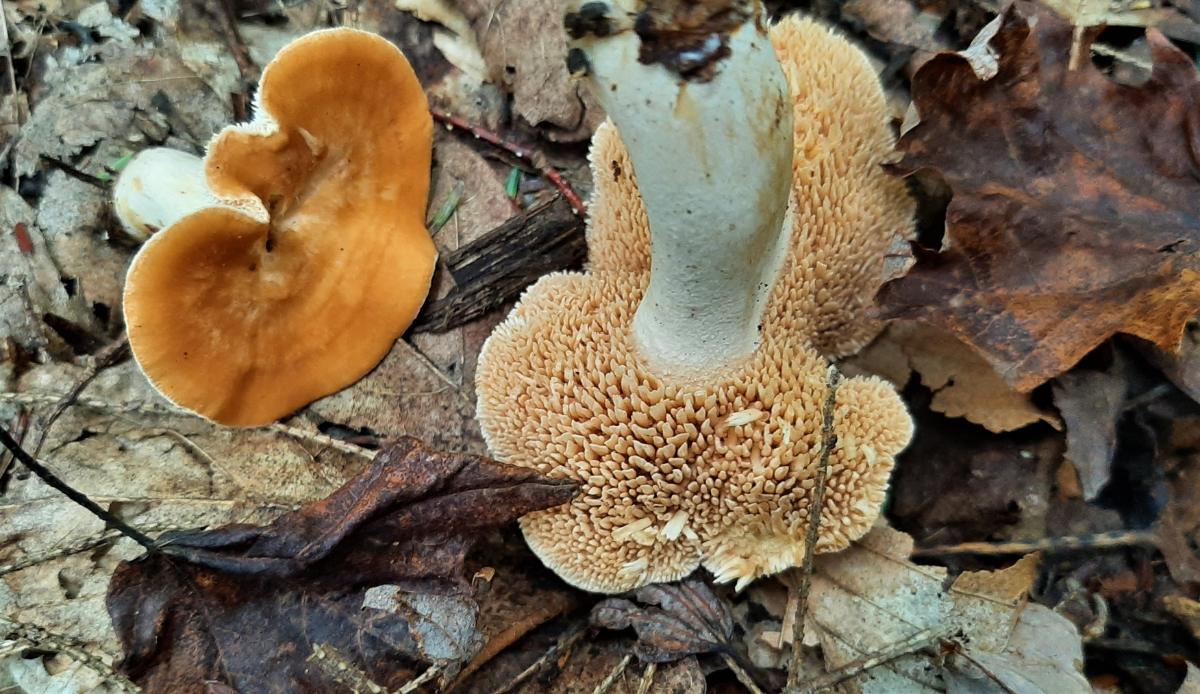
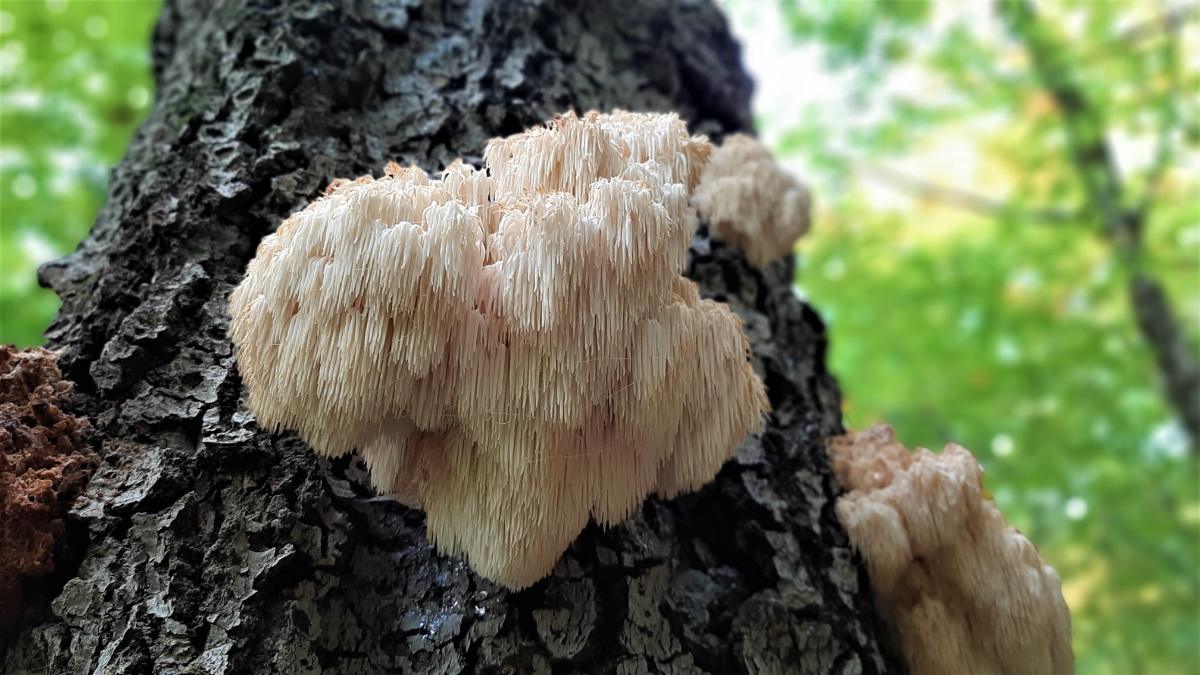
Tooth fungi are usually easy to tell apart from mushrooms with gills or pores. The teeth may hang down a few millimeters or even more than a centimeter! When trying to identify mushrooms, the presence of teeth will narrow down your search considerably.
Identify Mushrooms: Some Unique Examples
Here are some mushrooms that don’t reproduce through gills, pores, or teeth:
- Chanterelles. As discussed above, those folds under the cap are false gills, not true gills. Chanterelles drop spores from the undersides of their curled caps, which are often smooth.
- Stinkhorn spores are produced in a foul smelling jelly that covers the top of the mushroom. Flies are attracted and spread the spores after landing. Yuck!
- Puffballs, including the giant puffball, release their spores through a hole in the top (called an ostiole) or when the mushroom ruptures.
- The hymenium (spore creating tissue) of most coral fungi occurs as a microscopic layer covering all the branches. Spores simply drop from there.
- Similar to coral fungi, cup fungi have a spore-bearing surface on the inside of the cup with no pores or gills.
- The famous morel mushroom contains spore-producing sacs along the insides of its pits or wrinkles.
- And more! Many other types of jelly-like fungi, molds, and mildews release spores through methods other than gills, pores, or teeth. However, I don’t suspect you’ll be trying to eat those!
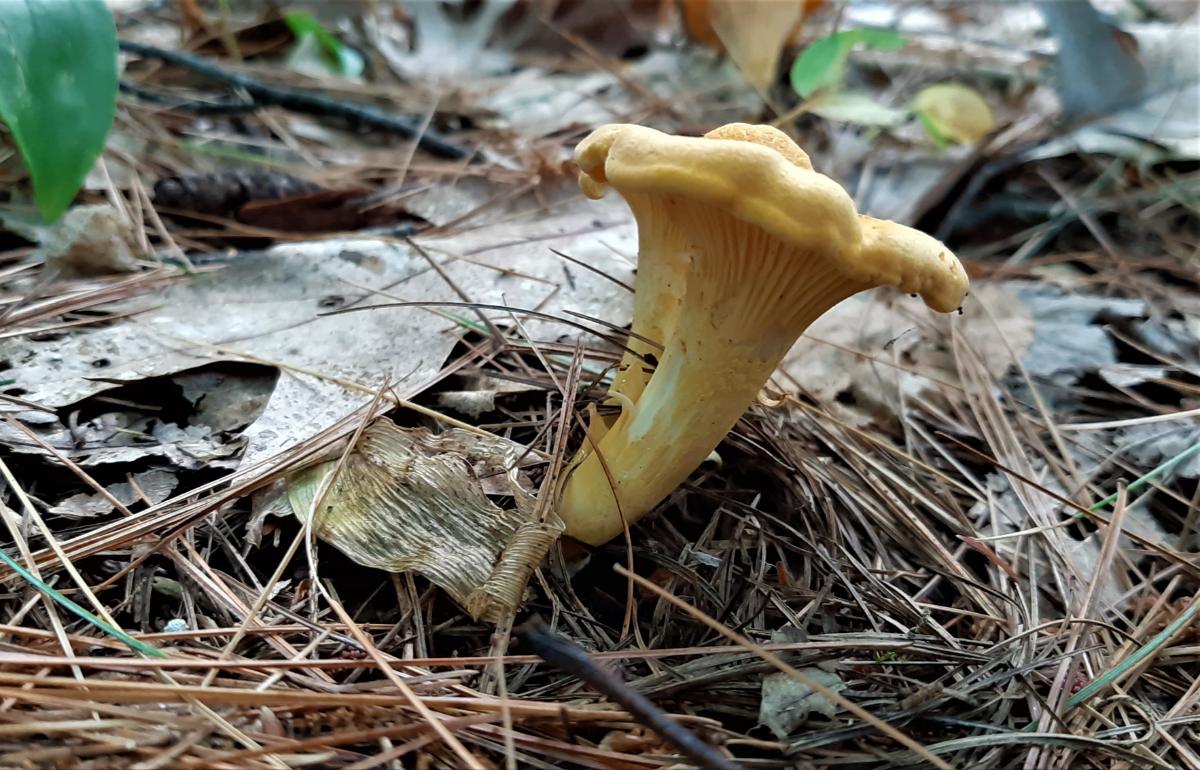
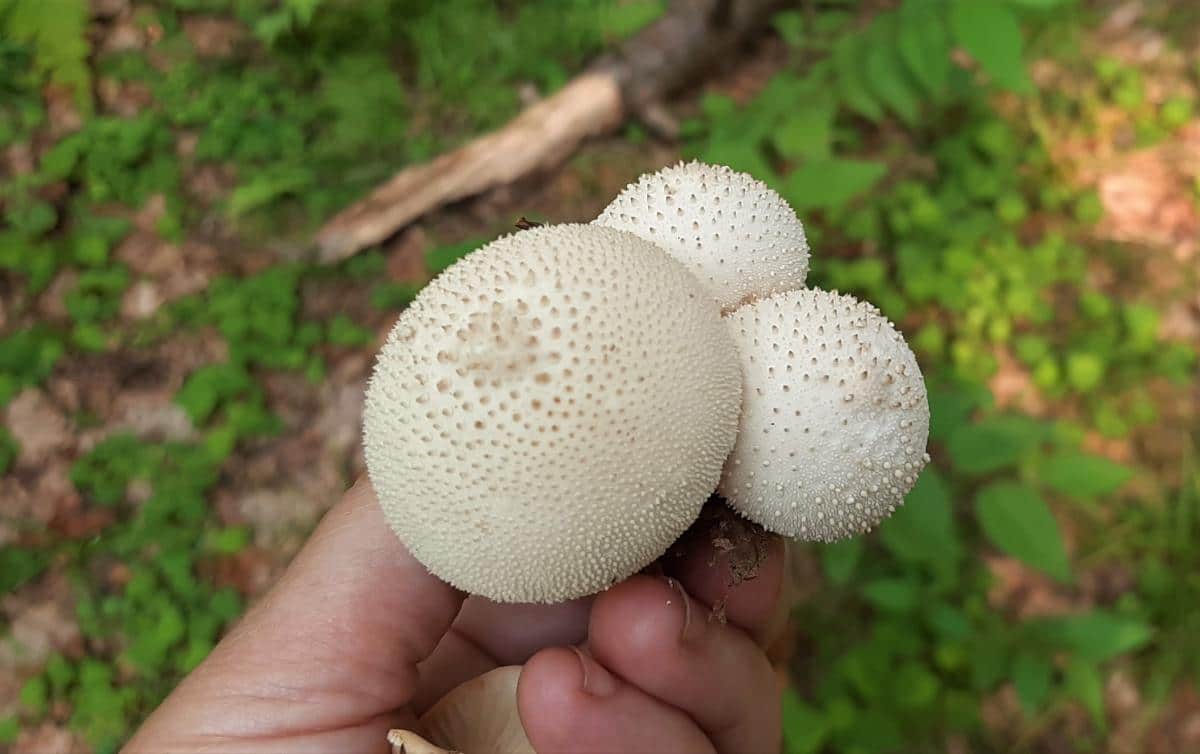
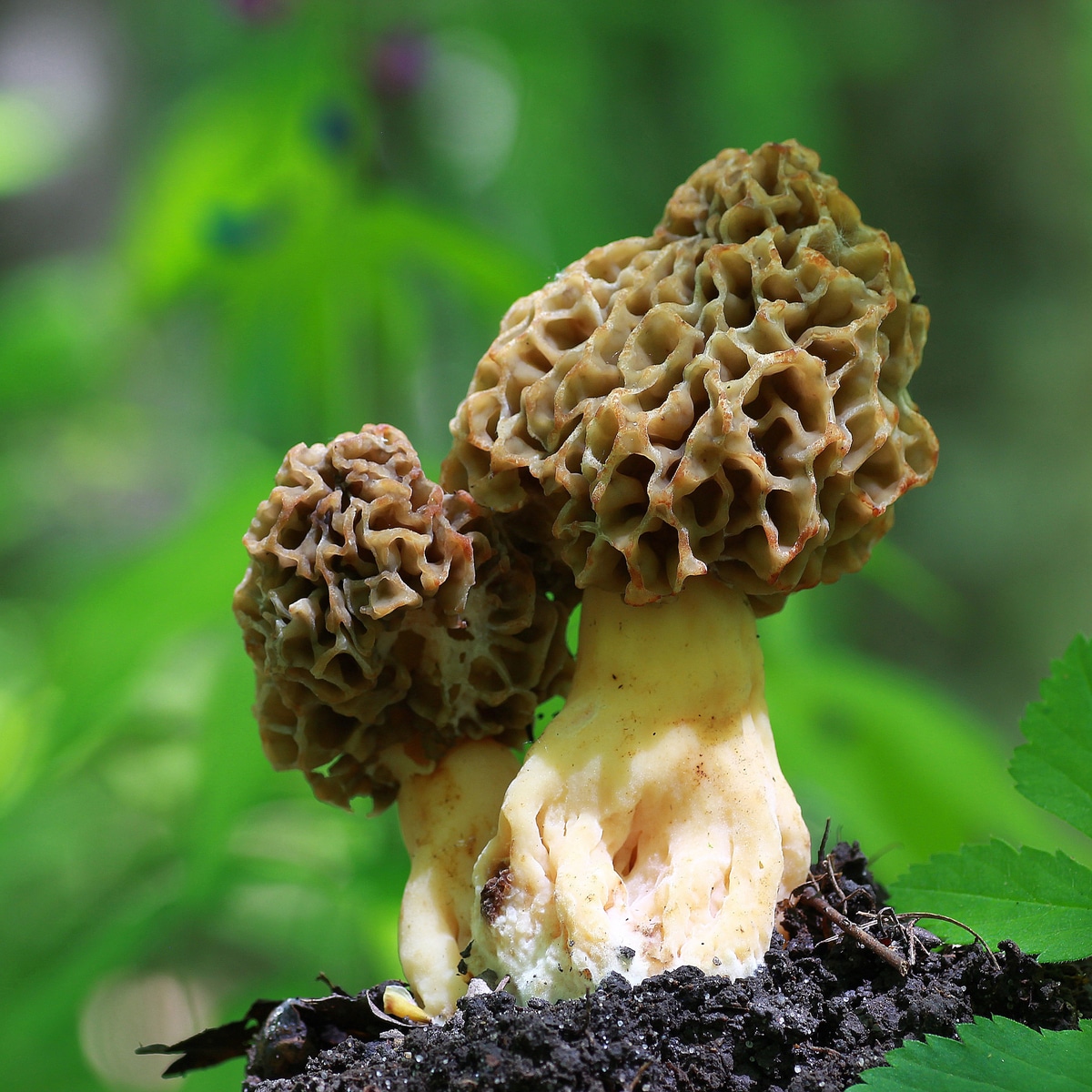
So the next time you want to identify mushrooms don’t forget to look at the spore-bearing structures. How a mushroom reproduces can tell you a lot!

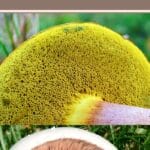
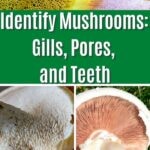
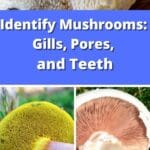
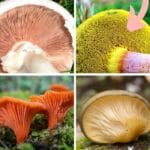
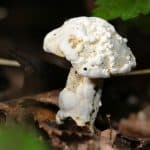
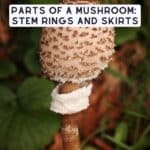
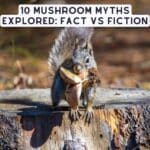
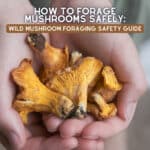
Anna Carner says
I live on a farm in Fauquier County, VA. My mushroom foraging adventure is just starting. Thanks for the help.
Jenny says
You are welcome! It’s a great adventure, and once you start looking, I think you’ll find the range of mushrooms truly astounding. Have fun out there
david says
Very helpful information and presented a an easy to understand way . I paint fungi and so far have painted around 250+ all found in Scotland .
Jenny says
Thank you and that’s super cool! Fungi are such a great painting focus — you could probably aim to paint them all and still there’d me more LOL. The neverending inspiration 😀
Ilze says
I found a brown parachute shaped mushroom with no stem, very white fleshy inside with thin brown outside layer.
Jenny says
The best way to get identification help is to go to our facebook group and post images there. Make sure to include photos of the top, bottom, gills or lack of, and what it is growing on 🙂
Agnieszka Laskus says
Thank you so much for this most informative article and beautiful images
Jenny says
You are very welcome! Happy hunting 🙂